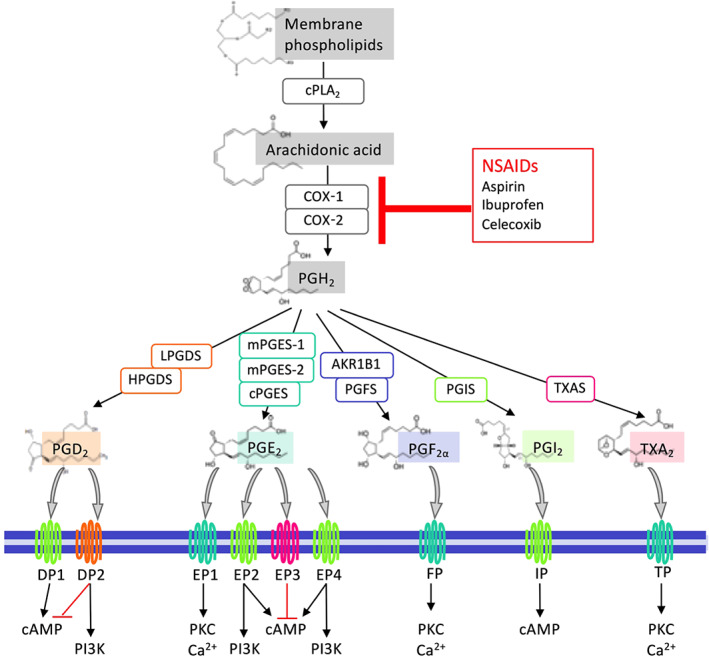FIGURE 1.

An overview of PG biosynthesis, receptors, and downstream signalling pathways. Arachidonic acid (AA) is released from membrane phospholipids via the actions of cytosolic PLA2 (cPLA2) following various stimuli and then metabolised to PGH2 by COXs (COX‐1 and COX‐2). PGH2 is unstable and subsequently converted into PGs, that is, PGD2, PGE2, PGF2α, PGI2, and TXA2 by the actions of their synthases PGDS (LPGDS and HPGDS), PGES (mPGES‐1, mPGES‐2, and cPGES), PGFS (AKR1B1 and PGFS/ABR1C3), PGIS, and TXAS, respectively. PGs bind to their receptors and activate different downstream signalling pathways. PGD2 receptors, DP1 and DP2, activate the cAMP and PI3K pathways, respectively, while DP2 also represses the cAMP pathway. PGE2 receptors EP2 and EP4 activate both cAMP and PI3K pathways, EP1 activates PKC and Ca2+ pathways, and EP3 deactivates the cAMP pathway. Both PGF2α receptor FP and TXA2 receptor TP activate PKC and Ca2+ pathways, whereas PGI2 receptor IP triggers activation of cAMP signalling. On the other hand, non‐steroidal anti‐inflammatory drugs (NSAIDs) inhibit AA biosynthesis of all PGs by targeting COX‐1 and/or COX‐2
